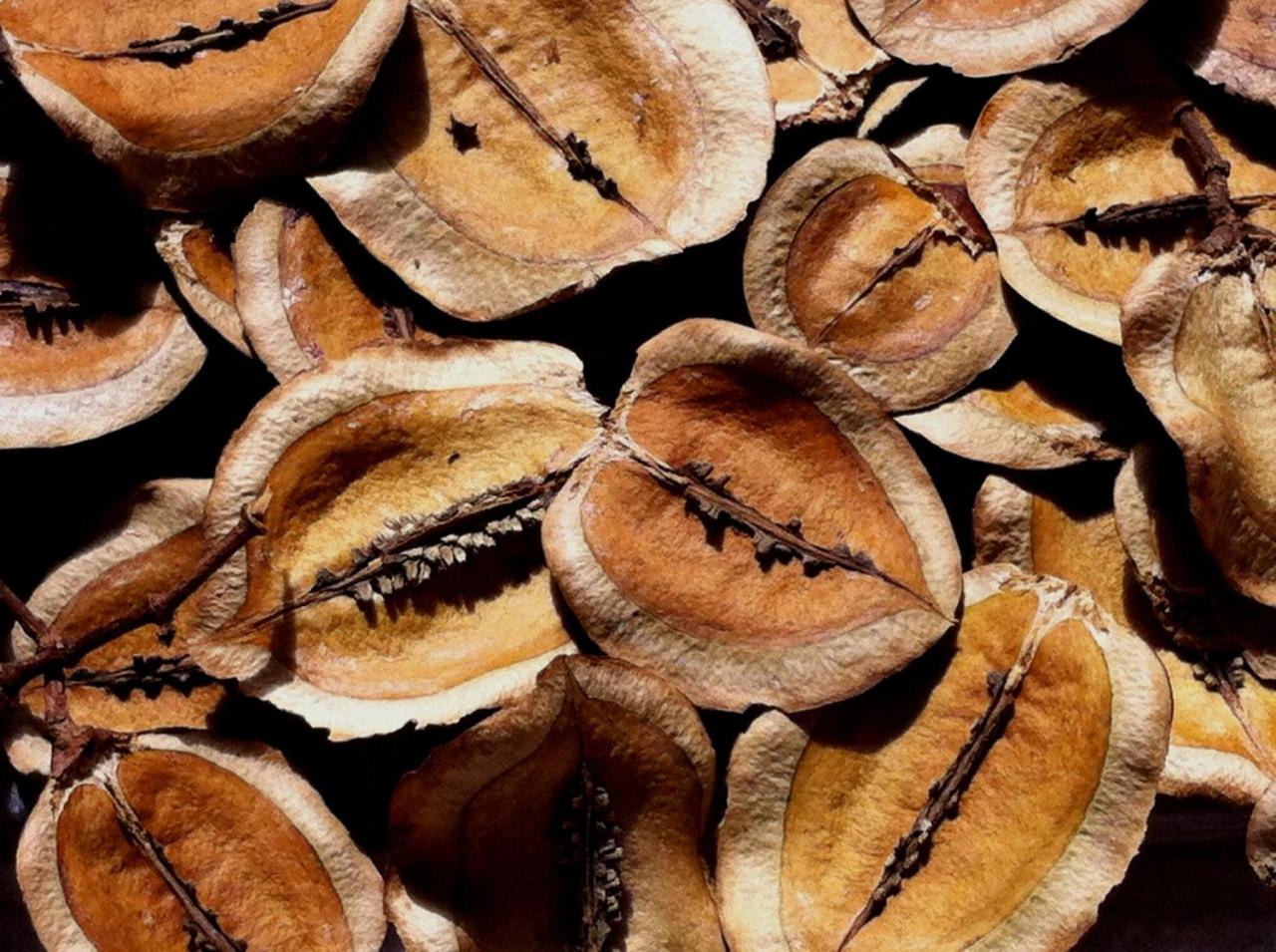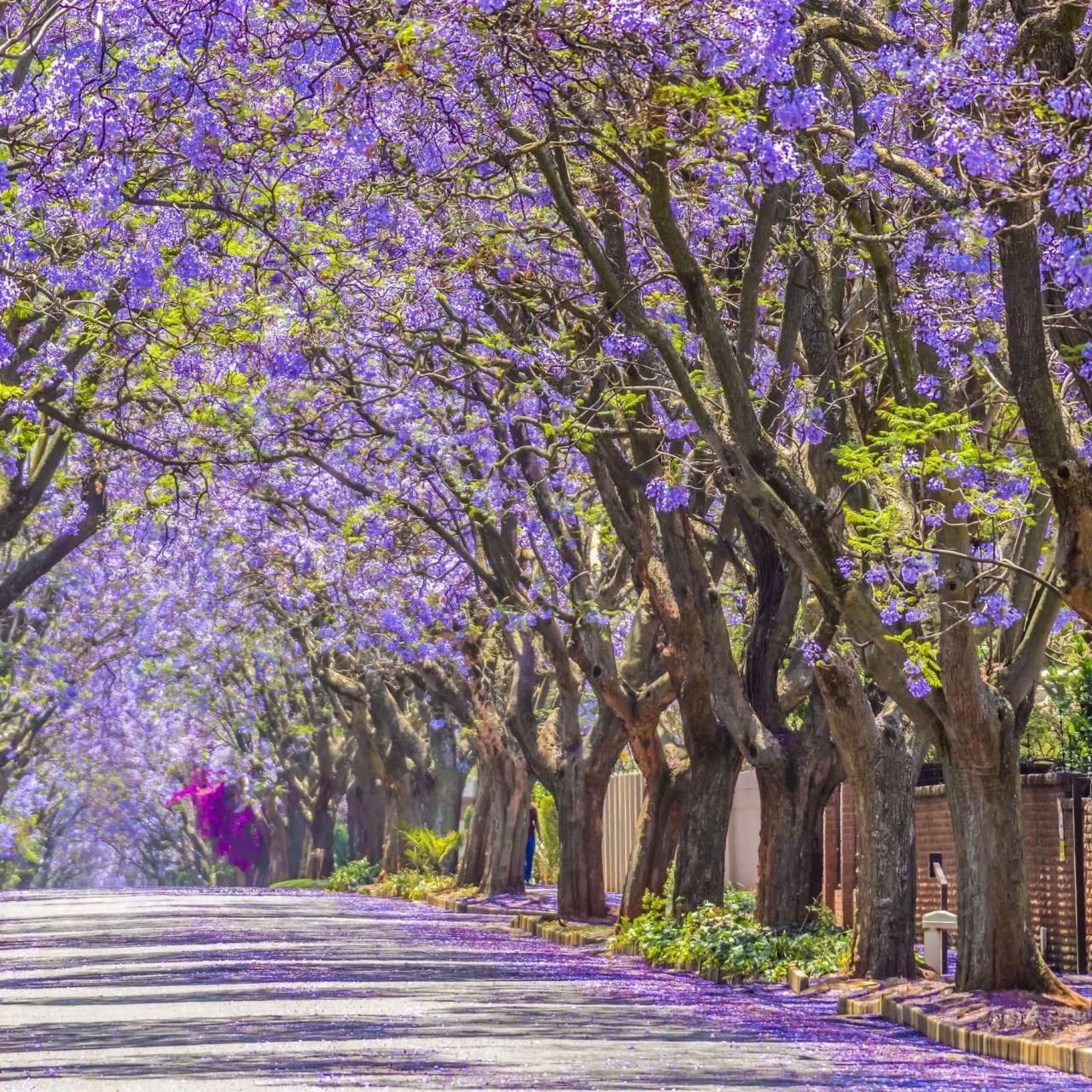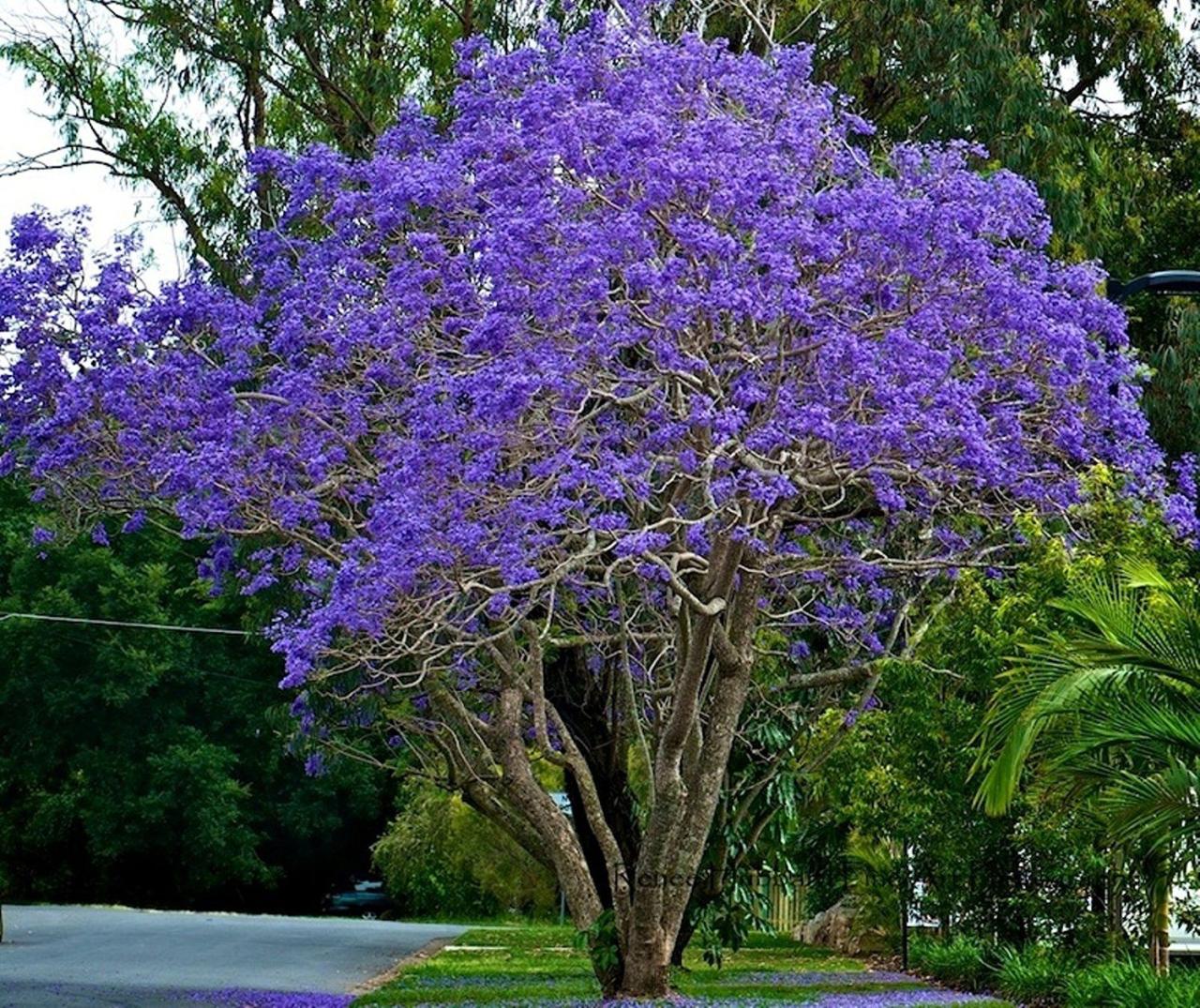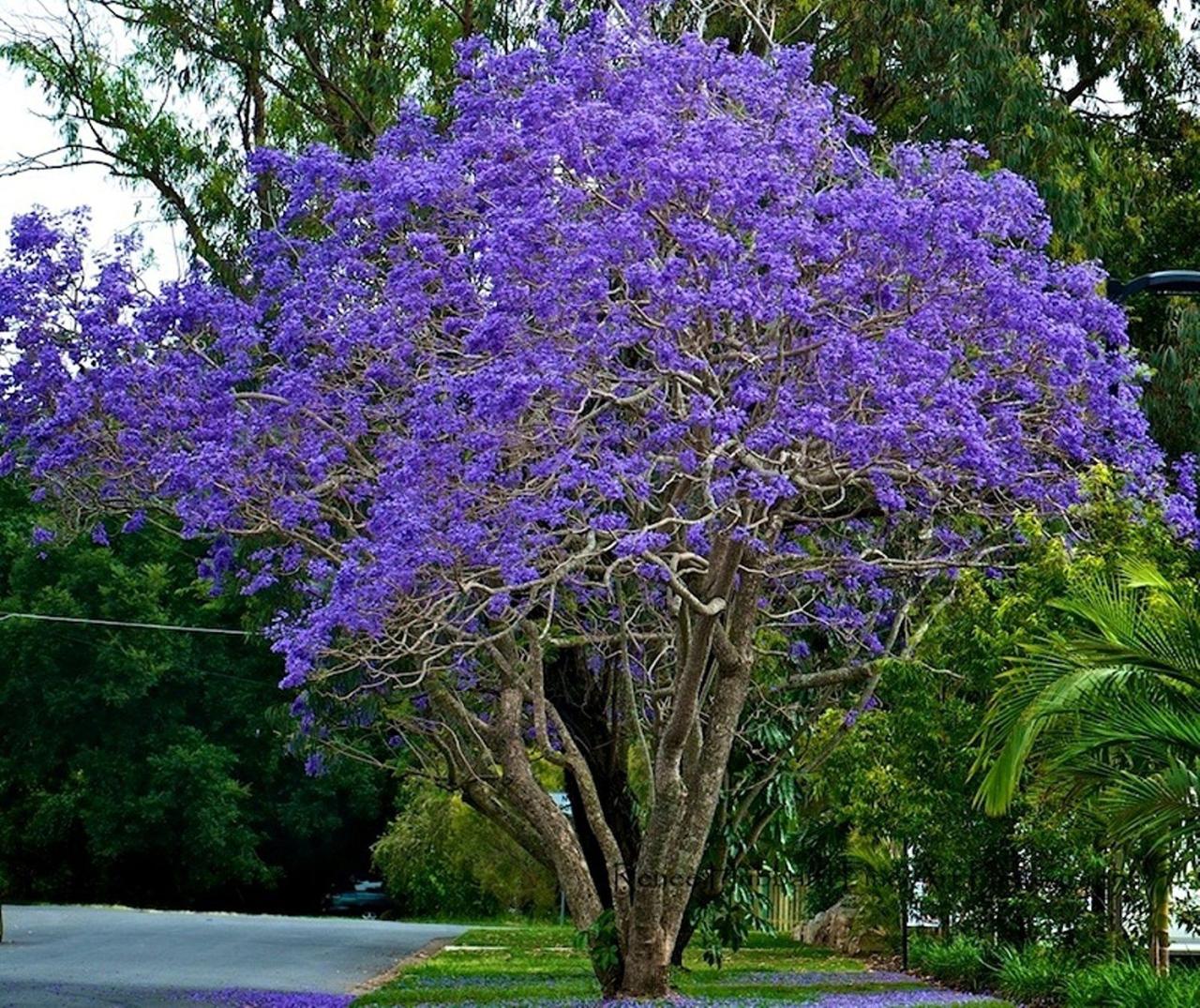How to Use Jacaranda Tree for a Gorgeous and Unique Outdoor Space: Essential Tips sets the stage for this enthralling narrative, offering readers a glimpse into a story that is rich in detail with search engine journal author style and brimming with originality from the outset.
Jacaranda trees, with their vibrant purple blooms and graceful foliage, offer a unique and captivating addition to any outdoor space. These trees, native to South America, are known for their striking beauty, particularly during their flowering season, when they transform landscapes into breathtaking displays of color.
Their cultural significance in various regions adds another layer of intrigue, making them more than just plants – they become symbols of beauty, joy, and even cultural identity.
This comprehensive guide delves into the world of Jacaranda trees, providing practical advice and inspiring ideas for incorporating these magnificent trees into your outdoor haven. From selecting the right variety for your climate and garden size to mastering the art of planting and care, this guide covers all the essential aspects of embracing the beauty of Jacaranda trees.
The Allure of Jacaranda Trees

Jacaranda trees, with their vibrant purple blooms and graceful foliage, offer a unique and captivating beauty that can transform any outdoor space into a breathtaking oasis. These trees are renowned for their visual impact, cultural significance, and ability to create a sense of tranquility and wonder.
Visual Impact
Jacaranda trees are known for their striking visual impact, especially during their flowering season. Their vibrant purple blooms, which resemble delicate, bell-shaped flowers, create a stunning spectacle that can transform an entire landscape. The flowers typically appear in late spring and early summer, covering the trees in a sea of purple, creating a truly unforgettable sight.
Cultural Significance
Jacaranda trees hold cultural significance in various regions around the world. In South Africa, they are a symbol of spring and are often associated with the beginning of a new academic year. In Australia, they are particularly prevalent in Queensland and are celebrated for their beauty and the vibrant purple hues they bring to the landscape.
In some cultures, Jacaranda trees are believed to represent good luck, prosperity, and a sense of peace.
Choosing the Right Jacaranda Variety

Jacaranda trees come in various species, each with unique characteristics that make them suitable for different climates and garden sizes. Understanding these differences is crucial for selecting the best Jacaranda variety for your outdoor space.
Jacaranda Species Comparison
The selection of Jacaranda species depends on your climate and garden size. Here are some popular Jacaranda varieties and their suitability for different regions:
Jacaranda Variety |
Climate Suitability |
Height |
Growth Rate |
Bloom Color |
Other Features |
|---|---|---|---|---|---|
Jacaranda mimosifolia |
Warm temperate to subtropical |
30-50 ft |
Moderate |
Lavender-blue |
Most common species, drought-tolerant, attracts butterflies |
Jacaranda acutifolia |
Tropical |
40-60 ft |
Fast |
Blue-purple |
Large leaves, frost-sensitive, prefers humid climates |
Jacaranda cuspidifolia |
Tropical to subtropical |
20-30 ft |
Slow |
Pale blue |
Smaller leaves, tolerates some frost, ideal for smaller gardens |
Jacaranda paucifolia |
Subtropical |
15-25 ft |
Moderate |
Pale blue |
Compact, spreading habit, suitable for containers |
Choosing Jacaranda Varieties Based on Height, Growth Rate, and Bloom Color
Consider the following factors when selecting a Jacaranda variety:
- Height:Jacaranda trees can grow to significant heights, so choose a variety that suits your garden size. For smaller gardens, consider dwarf varieties like Jacaranda paucifolia.
- Growth Rate:Fast-growing Jacaranda species, like Jacaranda acutifolia, require more frequent pruning. Slower-growing varieties, like Jacaranda cuspidifolia, are better suited for gardens with limited space.
- Bloom Color:Jacaranda trees are known for their vibrant blue flowers. However, some varieties, like Jacaranda paucifolia, produce pale blue flowers. Choose a variety that complements the existing color scheme of your outdoor space.
Planting and Care for Jacaranda Trees

Jacaranda trees are known for their stunning purple blooms, but they require specific conditions to thrive. Proper planting and care ensure a healthy and beautiful tree in your outdoor space.
Creating a stunning outdoor space with a Jacaranda tree requires careful planning and attention to detail. The vibrant purple blooms add a touch of whimsy and color, but the tree’s growth habit can be managed for a more cohesive design.
For a unique twist, consider incorporating elements inspired by the culinary world, like the vibrant flavors of perilla leaf, a versatile herb featured in Elevate Your Meals with Perilla Leaf: Tips for Creating Delicious Dishes. This can translate into a themed outdoor dining area, complete with perilla-infused dishes and cocktails, or even a herb garden featuring this flavorful plant.
Optimal Planting Conditions
Planting Jacaranda trees in the right conditions is crucial for their growth and survival. They prefer well-drained soil with a pH between 6.0 and 7.0. Full sun exposure, receiving at least 6 hours of direct sunlight daily, is essential for optimal growth.
Jacaranda trees are sensitive to frost and cold temperatures, so planting them in a frost-free location is vital.
Planting Techniques
Planting a Jacaranda sapling involves careful steps to ensure its healthy establishment.
- Dig a wide and deep hole: The hole should be twice the width and depth of the root ball.
- Amend the soil: Mix in compost or other organic matter to improve drainage and soil fertility.
- Position the sapling: Place the sapling in the hole, ensuring the root ball is level with the ground.
- Backfill the hole: Carefully fill the hole with soil, gently pressing it around the roots to eliminate air pockets.
- Water thoroughly: Water the newly planted tree deeply to settle the soil and encourage root development.
Essential Care Practices
Providing proper care for Jacaranda trees is essential for their long-term health and beauty. This includes:
- Watering: Water deeply and regularly, especially during the first year after planting. The frequency will depend on the climate and soil type, but aim for a consistent moisture level.
- Fertilizing: Apply a balanced fertilizer during the spring, before new growth emerges. This provides essential nutrients for healthy growth and flowering.
- Pruning: Pruning is important for shaping the tree and removing dead or diseased branches. It is best to prune during the dormant season, when the tree is not actively growing.
Incorporating Jacaranda Trees into Your Outdoor Space
Jacaranda trees, with their vibrant purple blooms and elegant form, can transform any outdoor space into a captivating oasis. Their unique beauty and versatility allow for diverse landscaping possibilities, catering to various garden styles and preferences.
Creative Landscaping Ideas
Jacaranda trees are a focal point in any landscape, demanding careful placement to highlight their captivating presence. Here are some creative landscaping ideas for showcasing the beauty of Jacaranda trees:* Solitary Statement:A single Jacaranda tree can be the star attraction in a spacious lawn, its cascading purple blooms drawing attention from afar.
Its graceful silhouette creates a sense of tranquility and grandeur.
Formal Alleys
Jacaranda trees can line pathways, creating a breathtaking spectacle with their vibrant blooms. The symmetrical arrangement enhances the formal aesthetic, creating a sense of grandeur and order.
Informal Groups
Planting multiple Jacaranda trees in a cluster creates a dynamic and whimsical effect. The varying heights and shapes of the trees, combined with their vibrant blooms, create a natural and lively atmosphere.
Water Feature Companions
Jacaranda trees thrive near water features, their cascading blooms mirroring the movement of water. This creates a serene and visually captivating scene, enhancing the overall ambiance of the space.
Examples of Jacaranda Tree Placement for Different Garden Styles
Garden Style |
Jacaranda Tree Placement |
Example |
|---|---|---|
Formal |
Symmetrical arrangement along pathways or borders, creating a sense of order and grandeur. |
A row of Jacaranda trees lining a paved pathway leading to a grand entrance, creating a dramatic and inviting effect. |
Informal |
Clustered planting in groups of varying sizes and heights, creating a natural and dynamic effect. |
A group of Jacaranda trees planted near a patio or deck, providing shade and a vibrant backdrop for outdoor gatherings. |
Tropical |
Near water features or in areas with ample sunlight, creating a lush and exotic atmosphere. |
A Jacaranda tree planted near a pond or fountain, its purple blooms reflecting in the water, creating a tranquil and tropical ambiance. |
Combining Jacaranda Trees with Other Plants
Jacaranda trees can be effectively combined with other plants to create a visually appealing and harmonious landscape. * Underplanting:Groundcovers like ferns, ivy, or creeping plants can be used to soften the base of the Jacaranda tree, adding texture and color.
Jacaranda trees offer a stunning spectacle with their vibrant purple blooms, but their beauty extends beyond aesthetics. To create a truly inviting outdoor space, consider incorporating natural insect repellents, like the citronella plant, for a bug-free haven. Learn more about the power of citronella in Citronella Plant Magic: How to Use This Herb for a Bug-Free and Fragrant Garden , and then pair this fragrant herb with your Jacaranda tree for a garden that’s both beautiful and functional.
Companion Planting
Shrubs with contrasting foliage colors, such as silver-leaved salvias or deep green hollies, can complement the purple blooms of the Jacaranda tree, creating visual interest.
Seasonal Blends
Planting seasonal flowering plants, such as marigolds or zinnias, around the base of the Jacaranda tree can create a vibrant display of color throughout the year.
When choosing companion plants, consider their mature size and growth habits to ensure they don’t overshadow the beauty of the Jacaranda tree.
Jacaranda Trees: A Focal Point for Outdoor Activities
Jacaranda trees, with their captivating beauty and expansive canopies, provide an exceptional opportunity to create inviting and functional outdoor spaces. They offer a unique blend of aesthetics and practicality, making them ideal for a variety of activities.
Creating Inviting Outdoor Spaces Around Jacaranda Trees
Jacaranda trees naturally lend themselves to creating inviting outdoor spaces. Their shade provides a welcome respite from the sun, and their vibrant blooms add a touch of elegance. To enhance the appeal of your Jacaranda tree, consider these ideas:
- Seating Areas:Place comfortable seating beneath the canopy, creating a cozy and inviting spot for relaxation or conversation. This can be a simple bench, a set of chairs, or even a hammock. The dappled sunlight filtering through the leaves adds a unique ambiance.
- Dining Spots:A dining table and chairs under the Jacaranda tree transform an ordinary meal into a special occasion. The tree’s shade creates a cool and inviting atmosphere, perfect for enjoying a meal with friends and family.
- Pathways:Create winding pathways leading to your Jacaranda tree, inviting guests to explore and discover its beauty. You can use pavers, gravel, or even a natural path lined with flowers.
Jacaranda Trees as Shade Providers for Outdoor Gatherings and Relaxation
The expansive canopy of a Jacaranda tree provides a natural shade structure, perfect for outdoor gatherings and relaxation. This shade is particularly valuable during hot summer months, offering a cool and comfortable environment for enjoying outdoor activities.
- Outdoor Gatherings:A Jacaranda tree can be the centerpiece of your outdoor gatherings, providing a shaded area for socializing, playing games, or simply enjoying the company of friends and family.
- Relaxation:The tranquil atmosphere created by the shade of a Jacaranda tree is ideal for relaxation. Settle into a comfortable chair or hammock and enjoy a good book, listen to music, or simply savor the peaceful surroundings.
Outdoor Activities Enjoyed Under the Canopy of a Jacaranda Tree
The shade and beauty of a Jacaranda tree create an inviting space for a variety of outdoor activities.
- Picnics:Enjoy a leisurely picnic under the Jacaranda tree, surrounded by its fragrant blossoms. The shade provides a comfortable setting for a relaxing meal.
- Reading:The dappled sunlight filtering through the leaves creates a peaceful ambiance for reading. Find a comfortable spot and lose yourself in a good book.
- Outdoor Games:The spacious canopy provides a shaded area for outdoor games, such as croquet, badminton, or even a game of cards.
- Yoga and Meditation:The tranquil atmosphere under a Jacaranda tree is perfect for yoga and meditation. The shade provides a peaceful setting for connecting with your inner self.
- Outdoor Parties:A Jacaranda tree can be the focal point of your outdoor parties, providing shade for guests and creating a beautiful backdrop for your celebration.
Jacaranda Trees: A Source of Inspiration
Jacaranda trees, with their vibrant purple blossoms and graceful foliage, have captivated artists, writers, and photographers for centuries. Their beauty and unique presence have inspired countless works of art, literature, and music, transforming them into symbols of inspiration and wonder.
The Artistic Expression of Jacaranda Trees
Jacaranda trees have been a favorite subject for artists around the world, inspiring them to capture their beauty and essence in various mediums. Their vibrant purple blooms, delicate leaves, and graceful forms offer a rich palette for artistic expression.
- Photography:Photographers are drawn to the dramatic contrast of Jacaranda trees against a clear blue sky, creating stunning images that capture the essence of their beauty. The ethereal beauty of the cascading purple blooms against the backdrop of a bright blue sky, or the play of light and shadow on their delicate leaves, makes them a captivating subject for photographers.
- Painting:Painters, particularly impressionists and post-impressionists, have been inspired by the vibrant colors and textures of Jacaranda trees. They use their brushstrokes to capture the fleeting beauty of the blossoms, the delicate patterns of the leaves, and the overall ethereal aura of these trees.
- Sculpture:The unique shape and form of Jacaranda trees have also inspired sculptors. Some sculptors have used wood from Jacaranda trees to create intricate sculptures that capture the essence of their natural beauty.
Jacaranda Trees in Literature and Art, How to Use Jacaranda Tree for a Gorgeous and Unique Outdoor Space: Essential Tips
Jacaranda trees have also found their way into literature and art, becoming symbols of beauty, nostalgia, and a connection to nature.
- Literature:In literature, Jacaranda trees have been used to evoke a sense of place, time, and emotion. They often symbolize beauty, peace, and tranquility, adding a touch of magic to stories. The poet Pablo Neruda, in his poem “The Jacaranda,” captured the beauty and mystique of these trees, writing about their “violet wings” and “purple shadows.”
- Music:The beauty of Jacaranda trees has also inspired musicians, who have used their imagery in songs and compositions. For example, the song “Jacaranda” by the Australian band The Seekers celebrates the beauty of these trees and their presence in Australian culture.
The Symbolic Meaning of Jacaranda Trees
Jacaranda trees hold symbolic meanings in different cultures, reflecting their unique beauty and presence.
- In South Africa,Jacaranda trees are associated with the arrival of spring and the promise of new beginnings. The vibrant purple blooms symbolize hope, renewal, and the beauty of life.
- In Australia,Jacaranda trees are considered a symbol of Australian identity and culture. Their presence in many Australian cities and towns is a reminder of the country’s rich natural heritage.
- In some cultures,Jacaranda trees are also associated with good luck and prosperity. Their vibrant blooms are seen as a symbol of abundance and good fortune.
Summary: How To Use Jacaranda Tree For A Gorgeous And Unique Outdoor Space: Essential Tips
With careful planning and the right approach, you can create an outdoor space that is not only beautiful but also a testament to the captivating charm of Jacaranda trees. From vibrant blooms to graceful foliage, these trees offer a unique and inspiring addition to any garden, creating a haven for relaxation, entertainment, and artistic expression.
Let the Jacaranda tree be the focal point of your outdoor haven, transforming your space into a vibrant and captivating sanctuary.
FAQ Insights
What is the best time to plant a Jacaranda tree?
The best time to plant a Jacaranda tree is during the spring or fall, when the weather is mild and the soil is moist. This allows the tree to establish its roots before the hot summer months or the cold winter.
How often should I water a Jacaranda tree?
Jacaranda trees require regular watering, especially during their first few years of growth. Water deeply and thoroughly, allowing the soil to dry out slightly between waterings. During the dry season, it may be necessary to water more frequently.
How do I prune a Jacaranda tree?
Jacaranda trees generally do not require extensive pruning. However, you can prune them lightly to shape the tree or remove any dead or diseased branches. It is best to prune in late winter or early spring before new growth emerges.
Are Jacaranda trees invasive?
While Jacaranda trees can be vigorous growers, they are not considered invasive in most regions. However, it is important to choose the right variety for your climate and garden size to ensure they do not become too large for your space.
